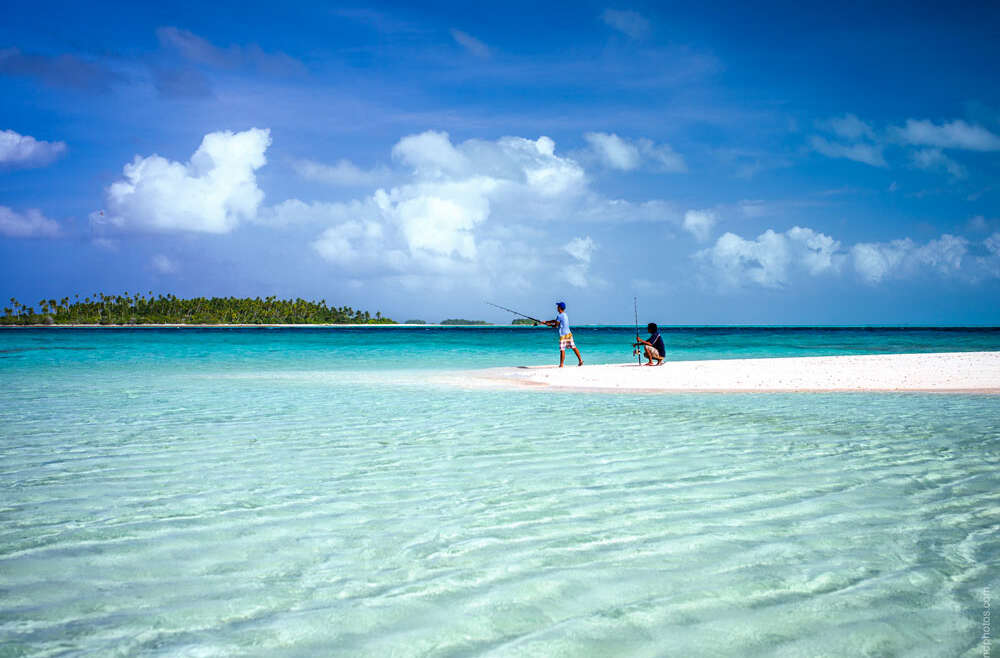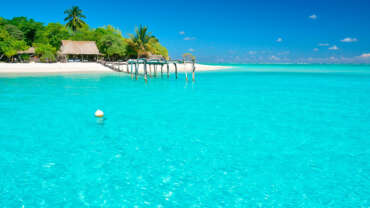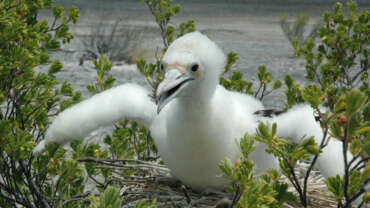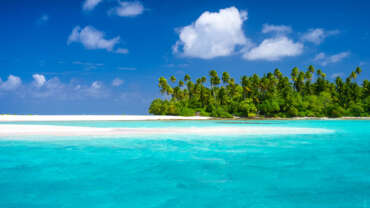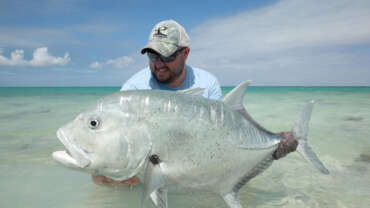Tarawa Island in Kiribati
Tarawa is an atoll and the capital of the Republic of Kiribati, in the central Pacific Ocean. It comprises North Tarawa, which has much in common with other, more remote islands of the Gilberts group; and South Tarawa, which is home to 50,182 as of 2010 – half of the country’s total population. The atoll is best known by outsiders as the site of the Battle of Tarawa during World War II.
Tarawa has a large lagoon, 500 square kilometres (193 sq mi) total area, and a wide reef. Although naturally abundant in fish and shellfish of all kinds, marine resources are being strained by the large and growing population. Drought is frequent, but in normal years rainfall is sufficient to maintain breadfruit, papaya and banana trees as well as coconut and pandanus.
North Tarawa consists of a string of islets, with the most northern islet being Buariki. The islets are separated in places by wide channels that are best crossed at low tide.
On South Tarawa, the construction of causeways has now created a single strip of land from Betio in the West to Buota in the Northeast.
In Kiribati mythology, Tarawa was the earth when the land, ocean and sky had not been cleaved yet by Nareau the spider. Thus after calling the sky ‘karawa’ and the ocean ‘marawa’, he called the piece of rock that ‘Riiki’ (another god that Nareau found) had stood upon when he lifted up the sky as, ‘Tarawa’. Nareau then created the rest of the islands in Kiribati and also Samoa.
People arrived on these islands thousands of years ago, and there have been migrations to and from Kiribati since antiquity.
Evidence from a range of sources, including carbon dating and DNA analyses, confirms that the exploration of the Pacific included settlement of the Gilbert Islands by around 200 BC. The people of Kiribati are still excellent seafarers, capable of making ocean crossings in locally-made vessels using traditional navigation techniques.
Thomas Gilbert, captain of the East India Company vessel Charlotte, was the first European to describe Tarawa, arriving on 20 June 1788. He named it Matthew Island, after the owner of his ship, the Charlotte. He named the lagoon, Charlotte Bay. Gilbert’s 1788 sketches survive.
Tarawa Post Office opened on 1 January 1911.
Sir Arthur Grimble was a cadet administrative officer based at Tarawa (1913–1919); and became Resident Commissioner of the Gilbert and Ellice Islands colony in 1926.
During World War II, Tarawa was occupied by the Japanese, and beginning on 20 November 1943 it was the scene of the bloody Battle of Tarawa. On that day United States Marines landed on Tarawa and suffered heavy losses from Japanese soldiers occupying entrenched positions on the atoll. The Marines secured the island after 76 hours of intense fighting with around 6,000 dead in total from both sides.
The Kiribati Government commenced a road restoration project funded in part by the World Bank in 2014 to surface the main road between Betio in the West to Bonriki in the East, upgrading the main road that transits Tarawa from a dirt road.



